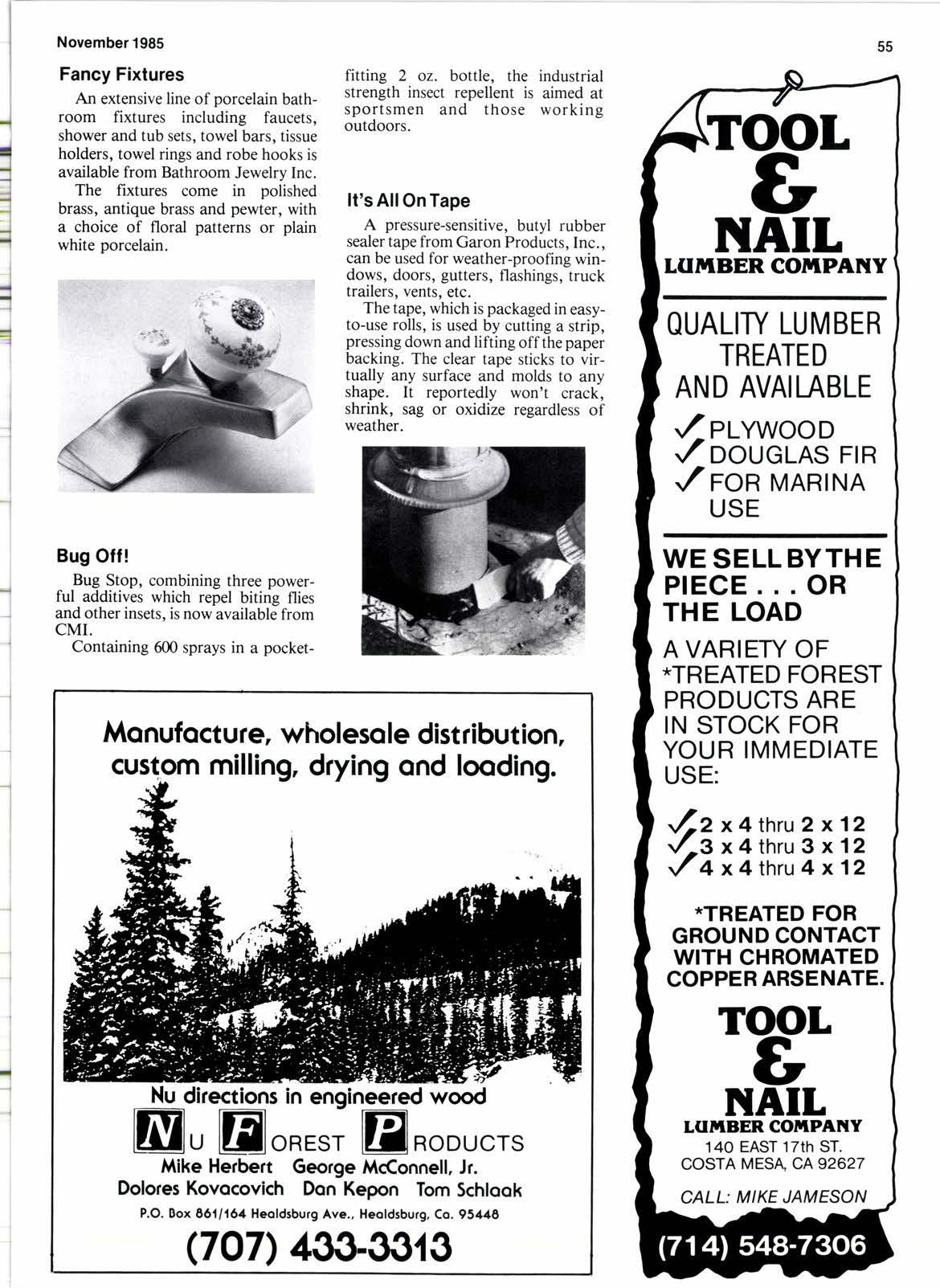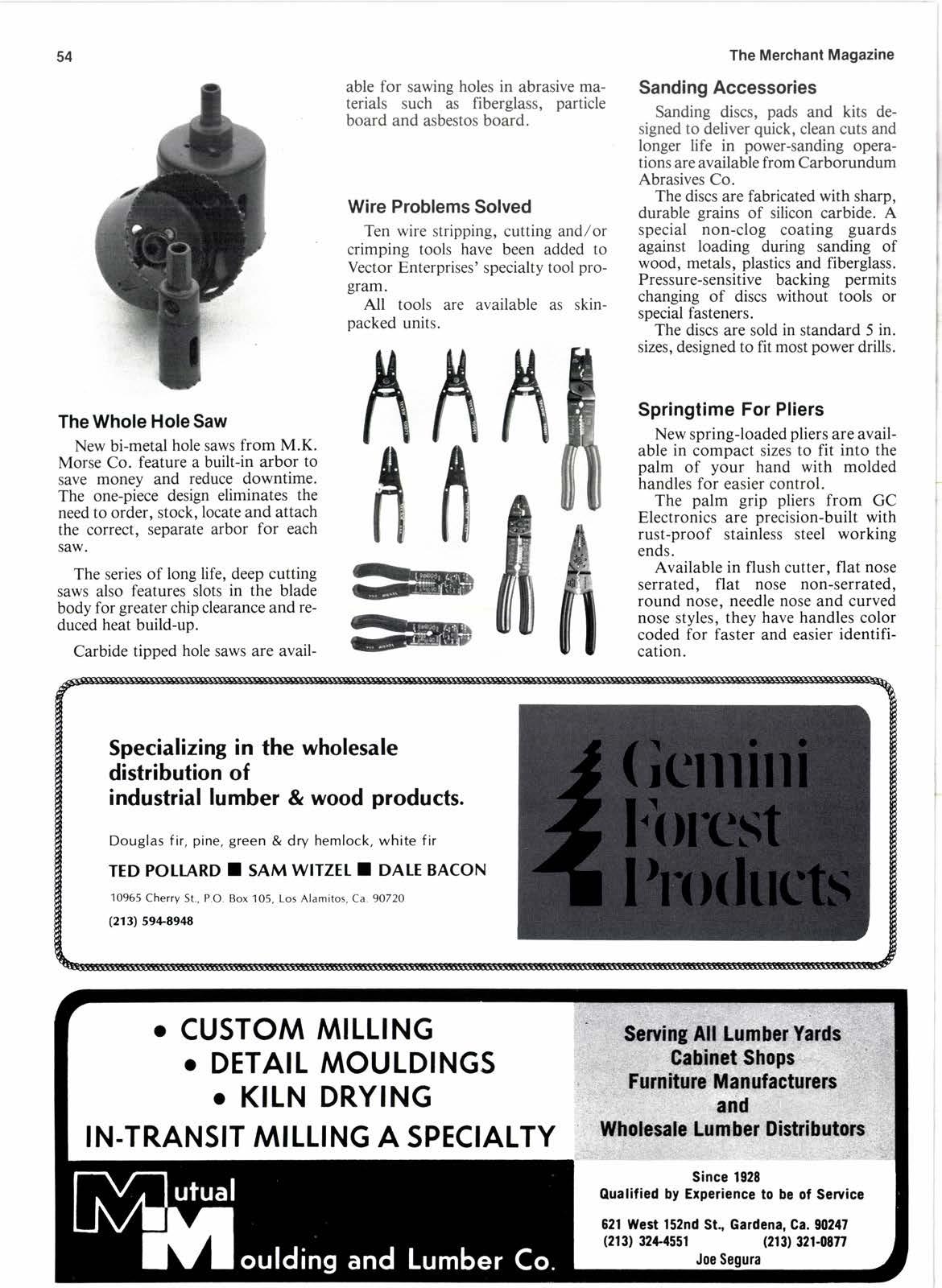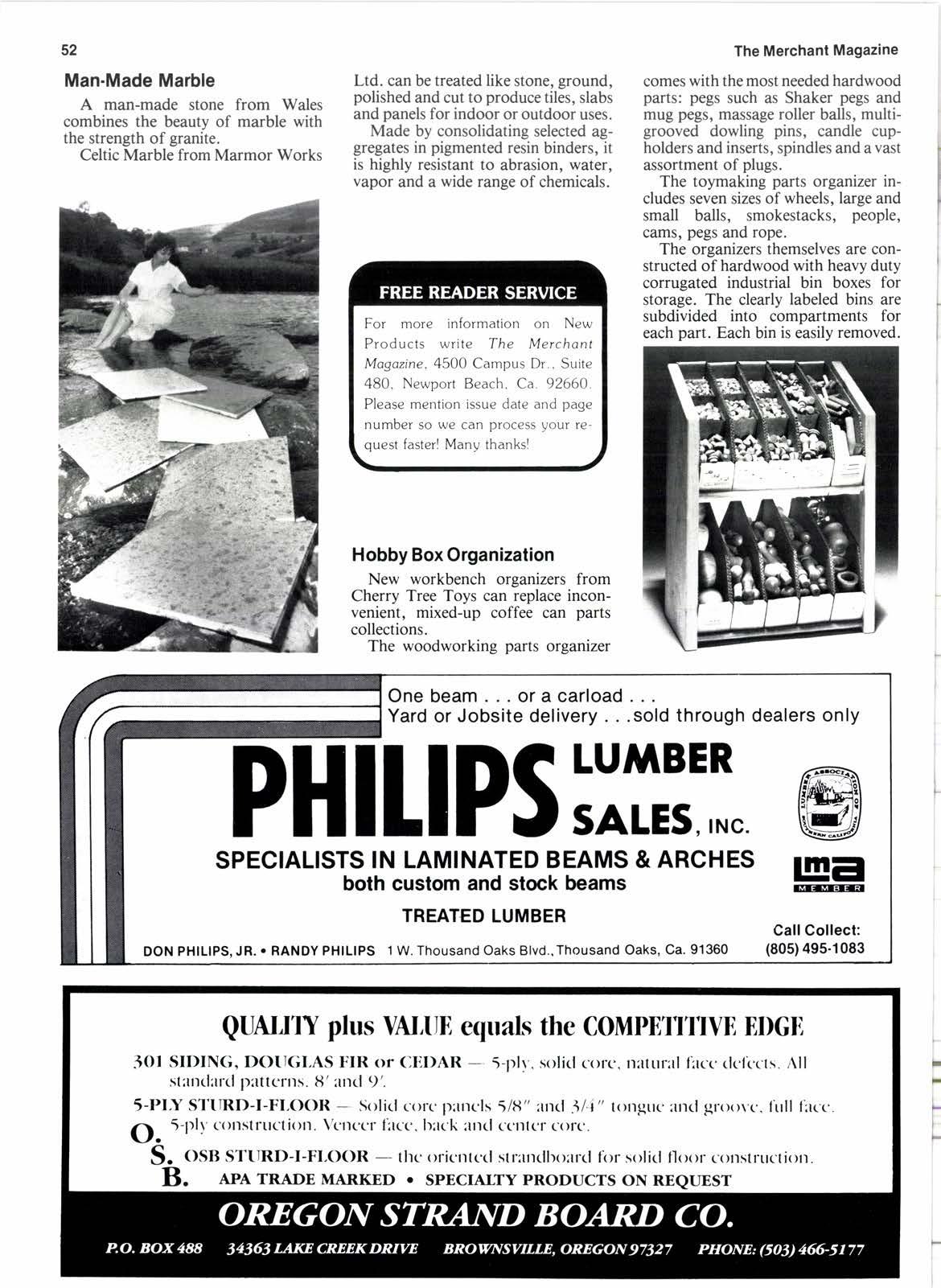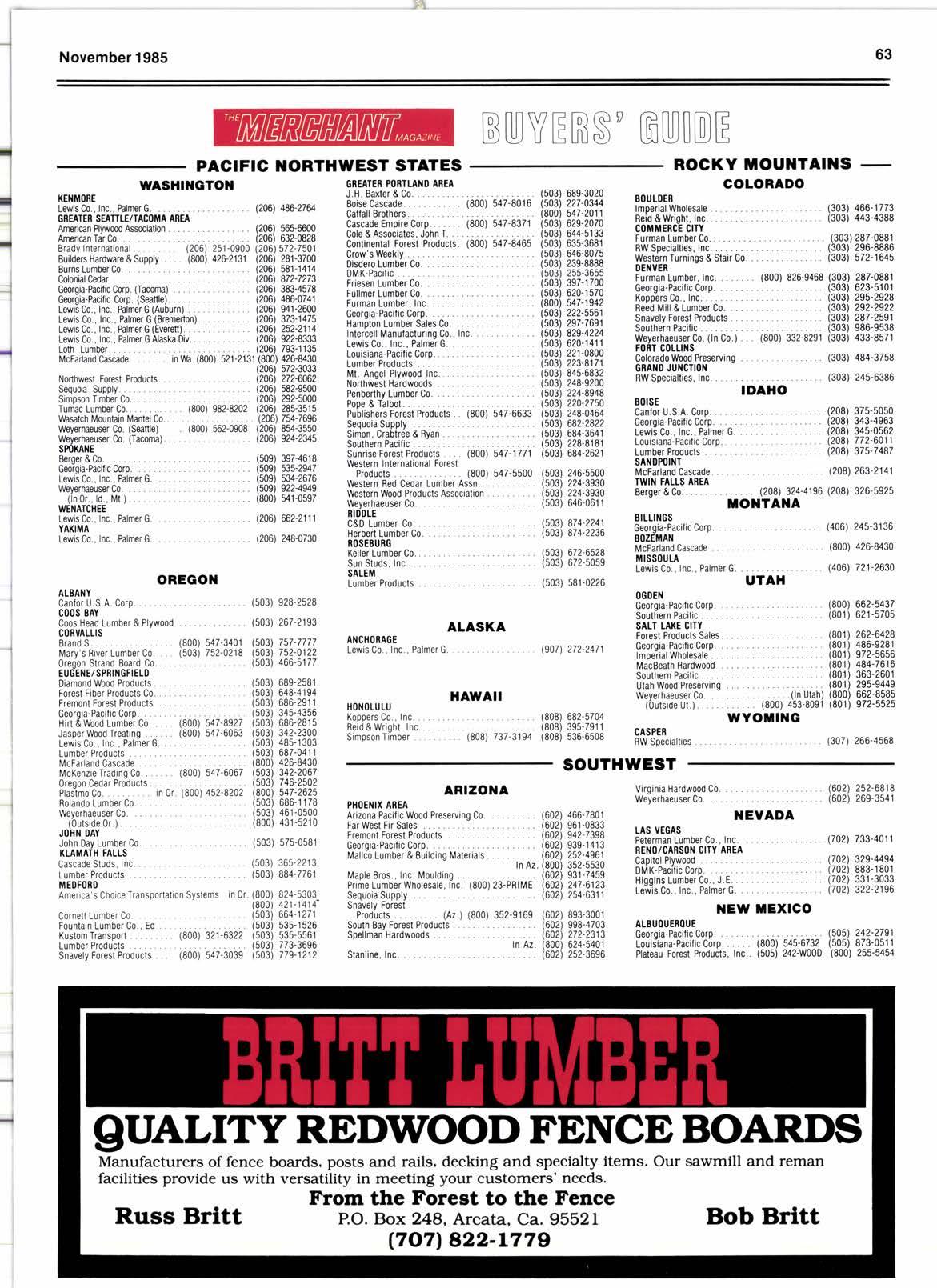
4 minute read
Oak the most widely used hardwood
This is the first of o series of orticles written by Gage McKinney, a contributing editor and hardwood expert, on the importance of the vorious types of oak lumber-ed.
EOn IVIORE than 500 years oak
I lumber has svmbolized sturdiness, strength and Leauty. From the time of medieval kings to the days of the consumer society, craftspeople have turned to oak when they have wanted to fashion the finest in furniture, cabinets and decorative woodwork. In the United States oak lumber production has continued at a level of about three and one-half billion board feet a year since 1955, and it leads all other hardwood species in volume use. So it is as clear today as it has been for years-oak is the wood woodworkers want.
Yet although oak is the most widely used hardwood in America, both amateur and professional woodworkers have to wonder just what they're buying when they ask for "oak." There are red oaks and white oaks and dozens of subspecies of each that grow domestically. Then there are the oaks of Britain, Europe and the Orient, along with foreign woods -such as Queensland oak, Chilean oak and Thsmanian oak-which merely resemble the real thing. How is a woodworker to know which oak will give the best value? Which are the best for strength, workability and beauty? For what applications are red oak and white oak preferred? What is the relation between geography and the quality of oak lumber? And what about those foreign oaks? How do they compare? Why are some so highly prized and others a woodworker's nightmare?
These aren't questions a woodworker can get answered at the local lumberyard. Even a distributor who specializes in hardwoods may be unclear about oak, his best seller. Or maybe he just pitches whatever type of oak lumber he has in stock. Books about wood can help, but most often they are too technical or unrelated to the current lumber market. Some reliable sources for information about oak are the hardwood lumber people, usually wholesalers, who buy huge quantities of oak lumber for resale. Sawmill people and foresters, who manufacture the product and know the woods, are also good sources. We interviewed many of these people and what they have been willing to share can answer many of the tough questions about oak.
Botanists have classified more than 60 species of American oaks, about 20 of which have commercial importance. In recent years the red oaks have unquestionably become the most important. Although there are several species of red oak, they can normally be distinguished only with a microscope. Regional names have been adopted for many of the species used commercially. They include northern redoak, southern redoak, Appalachian red oak, cherrybark red oak, shumard oak, black oak, water oak, laurel oak, pin oak, scarlet oak, blackjack oak, nuttall oak, yellow oak, willow oak, Canadian red oak and Texas red oak.
Generally the lumber and woodworking trade have preferred the
Story at a Glance
Oak is leader in volume use.. dozens of species and pseudospecies confuse buyers . hardwood experts answer questions, establish guidelines for selection.
relatively soft-textured varieties of red oak which grow in the northern states and the Appalachian area. For many years "Appalachian" has described the very best red oak lumber, although recently the term has been used so liberally as to become misleading. According to foresters, an ideal combination of rainfall, elevation (about 1,000 ft.), drainage and unglaciated soils produces the unique qualities found in Appalachian oak. The limestone soil of the region keeps the oaks relatively free of mineral deposits that would otherwise discolor the heartwood, making Appalachian oak renowned for its uniform, light pink color. It has the best working properties of any American red oak, and when properly kiln dried is not prone to checking and splitting.
In recent years the northern red oak from the Midwest. the Lake States and southern Canada has become as prized as Appalachian oak. Favorable freight rates out of the Midwest have made this lumber especially popular on the West Coast. "The cold winters slow the growth of the northern timber, making for soft, uniform, easy-towork lumber." said Pete Bernthal, a prominent hardwood wholesaler.
"The lumber sawn from Pennsylvania and Ohio to northern Michigan and Indiana is generally free of mineral stain, so many furniture manufacturers who produce a product with a natural finish insist upon oak from this region," Bernthal added. The red oak from Wisconsin and Indiana, although of equally good quality, tends towards shorter lengths due to logging practices in those areas, according to several lumber people.
The northern red oak from New England, especially from upstate New York, matches the quality of the northern oaks from the Midwest. According to foresters and lumber people, the New England red oak tends to lack the rosy color of other oaks and the widths of the lumber are often limited. But generally good lengths are available.
Room Additions Are No.1
Room additions are the No. I home improvement project in the United States if you judge importance by the amount of money spent.
The average room addition, according to figures released by Payless Cashways, costs from $20,000 to $40,000. The advantage is that it can pay for itself in increased value when the home is eventually sold.
The National Association of Home Builders says consumers will spend $71 billion on residential additions, alrerations and repairs this year, up l2.7Vo from the $63 billion spent in 1984.
Six Homecrafters To Close
Homecrafters Warehouse. Inc.. Birmingham, Al., has announced plans for the disposition of six of itsll warehouse stores-four in Denver, Co., and two in Nashville, Tn. These units will either be sold or closed by year-end 1985.
In commenting on the disposition, Georges A. Hanzi, president and chairman said, "Our losses in both the Denver and Nashville markets have put a strain on the company's cash position. We could not continue to absorb additional losses."
The company will conlinue ro operate its three warehouse stores in Memphis, Tn., and two warehouse stores in Louisville, Ky.
Lumberman to the Rescue
A highway tragedy was narrowly avoided because of the good deeds of Jim Barr of the Barr Lumber Co., El Centro. Ca.

The Reverend William Maclnnes and his wife were driving home to San Diego after preaching at a church in Brawley, Ca., when their car overheated in the desert.
No one stopped to help them for three hours. The intense August heat soon endangered the life of Maclnnes, who was recovering from recent surgery.
Finally, Barr came along. He spent an hour and a half repairing a broken hose with a replacement radiator hose which he had with him.
Maclnnes and the pastor of the Brawley church publicly thanked the "Cood Samaritan" throueh local newspapers.










